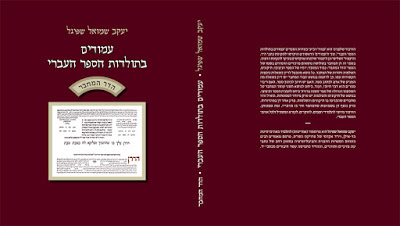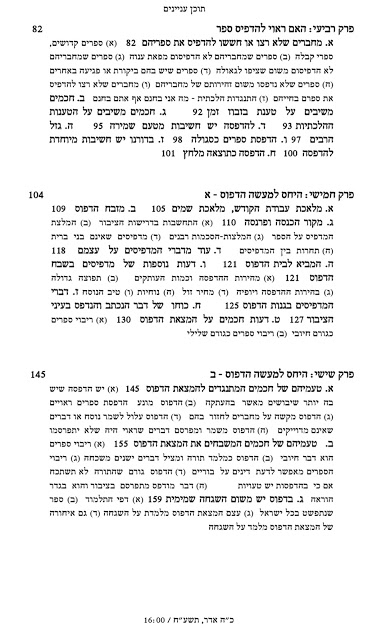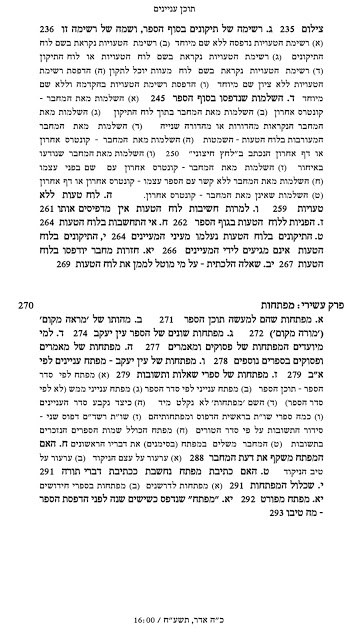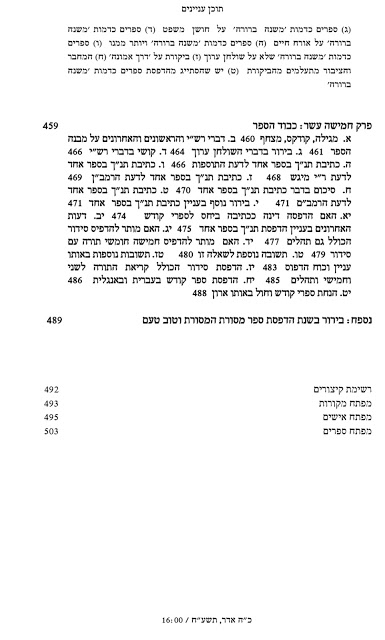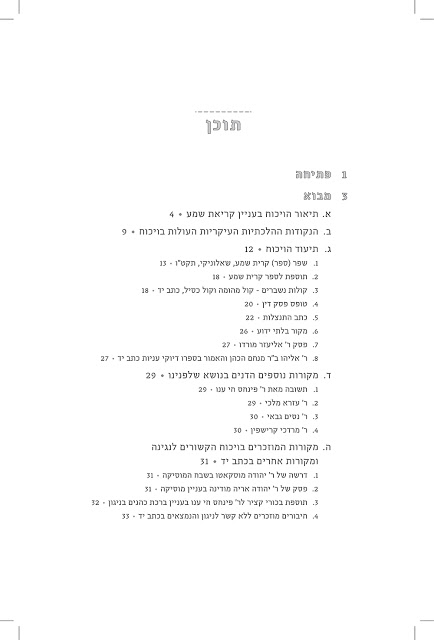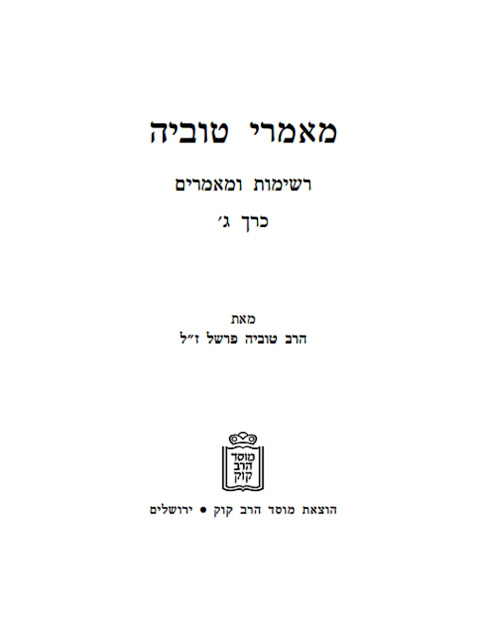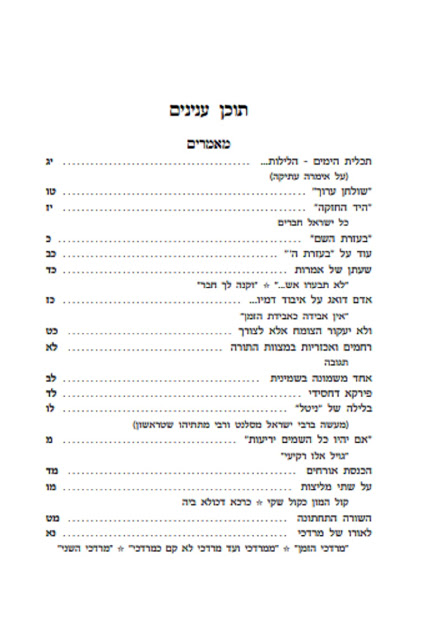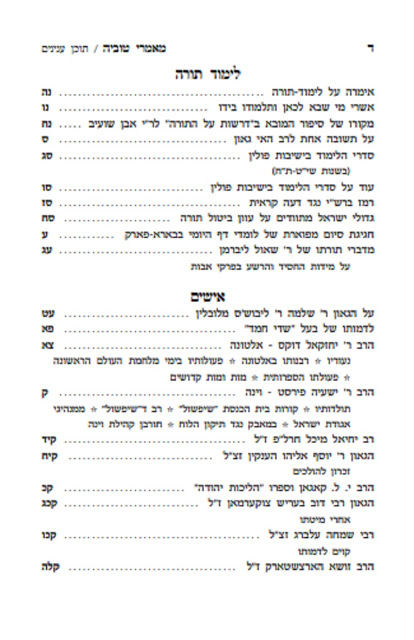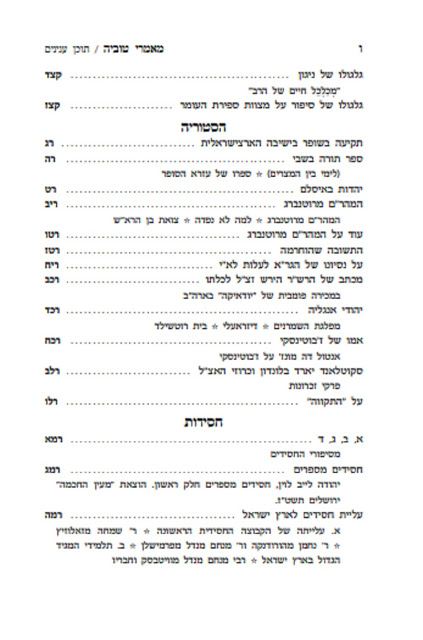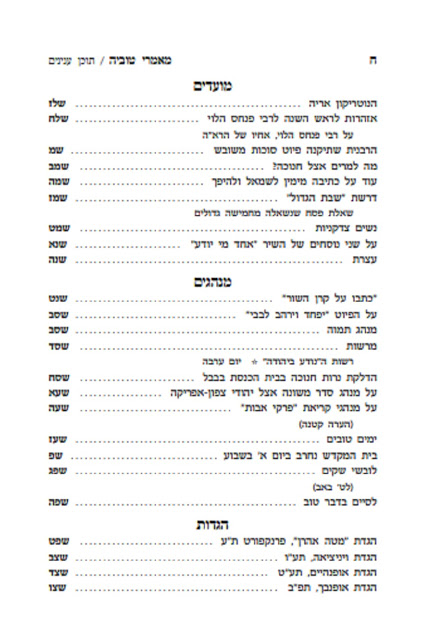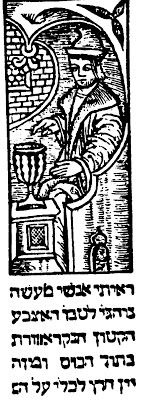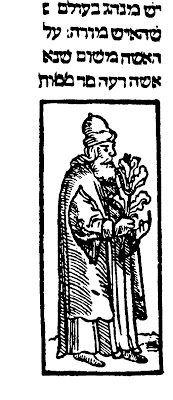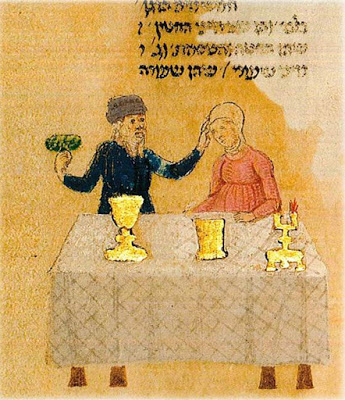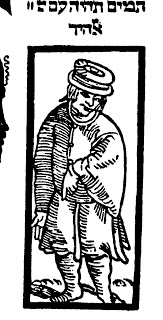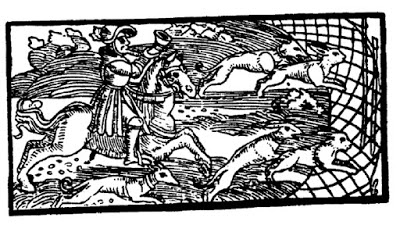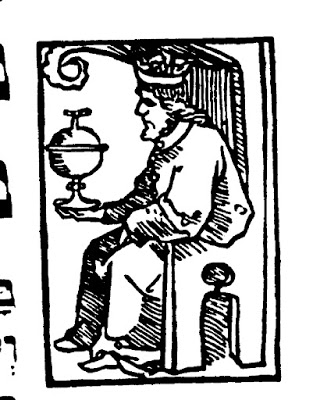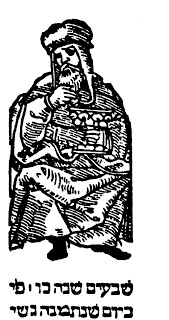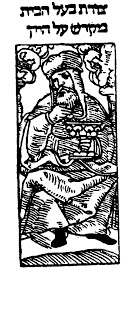Birchas Ha-ilanos in Nissan
By Eliezer Brodt
The Following article originally appeared in Yeshurn 32 (2015) [Eventually it will be updated]. For another part of this series see
here.
הלכות ברכת הראייה במסגרת הספר ‘מעגל טוב‘ לחיד“א (ג)1 ברכת האילנות
אליעזר יהודה בראדט
ברכה האילנות בניסן2 ביומנו ‘מעגל טוב’ כתב החיד”א ביום א’ בניסן תקל”ז: “וברכתי ברכת אילנות”3. בשנת תקל”ח כתב בכ”ט בניסן: “ואחר מנחה ברכתי ברכת אילנות בגן”4. ביומנו
גם רשם בשנת תקמ”ח: “ברכתי ברכת אילנות שילהי ניסן בפיזא”5. וכן בשנת תקמ”ט: “ברכת האילנות סוף ניסן”6.
בחיבורו ‘מורה באצבע’ כתב: “ישתדל לברך ברכת אילנות בימי ניסן, והמדקדקים מקפידים שיהיה בניסן דווקא… מאד יתעצם בכוונתו בברכה זו שהיא לתיקון הנשמות שהם מגולגלות בעצי השדה והעשבים בזמן הזה ויבקש עליהם רחמים”7. ובחיבורו ‘ברכי יוסף’ כתב: “ואני שמעתי דברכה זו על דרך האמת שייכא דוקא לימי ניסן”8.
מחמת דברי החיד”א הללו כתבו הרבה פוסקים מעדות ספרד שיש לברך ברכה זו דווקא בימי ניסן, שבקהילות הספרדים נוהגים כהוראות רבינו החיד”א כמעט בכל מקום9. רשימה חלקית של פוסקים אלו: ר’ אברהם כלפון ב’לקט הקציר’10, ר’ דוד זכות ב’זכר דוד’11 ר’ חיים פלאג’י ב’מועד לכל חי’12 ר’ אלישע דנגור ב’גדולות אלישע’13, ר’ יוסף חיים בעל ‘בן איש חי’ בחיבורו ‘לשון חכמים’14, ר’ אברהם חמוי ב’בית הבחירה’15, ור’ יעקב חיים סופר ב’כף החיים’16. וכן מצניו שבאלג’יר נהגו לברך דווקא בחודש ניסן17. ויש לציין לדברי ר’ אלעזר פאפו שכתב בספרו ‘חסד לאלפים’: “ויש להקפיד שיהא בניסן דוקא או אפילו ביום א’ של ר”ח אייר”18.
והנה, מקור הדין של ברכת האילנות הוא תלמוד ערוך בברכות: “אמר רב יהודה: האי מאן דנפיק ביומי ניסן וחזי אילני דקא מלבלבי, אומר: ברוך שלא חיסר בעולמו כלום וברא בו בריות טובות ואילנות טובות להתנאות19 בהן בני אדם”20. וכן נאמר במסכת ראש השנה21. מדברי הגמרא משמע שברכה זו נאמרת דווקא בחודש ניסן. וכך יש לדייק מסתימת הלשון של הרבה ראשונים “ביומי ניסן…”22. וכך הבין ר’ יעקב חאגיז ב’שו”ת הלכות קטנות’23.
אמנם כבר הביאו ‘מקור חיים’24 ו’אליה רבה’25 שב’צדה לדרך’ כתב: “והוא הדין רואה אילנות פורחות בחדש אדר26. וב’שו”ת עמודי אש’ מביא מ’ריטב”א’ בר”ה27: “ויומי ניסן לאו דוקא אלא כל מקום ומקום לפי מה שהוא דמלבלבי”28. וכן הביא ר’ יוסף זכריה שטרן בשם חתנו שציין לדברי הריטב”א הנ”ל והוסיף לציין לדברי ‘האשכול’29 ו’רוקח’, שאינו דווקא בניסן30. כוונתו לדברי הרוקח: “הרואה אילנות שהוציאו פרק, כגון בניסן…”31. כידוע כבר האריכו רבים לבאר שהביטוי כגון שיעורו לאו דווקא32.
וכן יש לדייק משאר ראשונים, שברכה זו אינו חיוב דווקא בניסן. כך משמע מדברי ר’ יהודה ב”ר יקר,33, רבנו ירוחם34 המרדכי35 וספר הפרדס36, שאינם מזכירים דווקא ניסן. וכן מצינו שכתב ר’ אברהם בן הרמב”ם בחיבורו ‘המספיק לעובדי השם’: “ונקבעה ברכה על מקצתו, והיא ראיית העצים הפורחים בימי האביב וכדומה…”37. ושוב כתב ר’ אברהם בן הרמב”ם: “והרואה בגנים וכד’ עצים פורחים בימי האביב מברך…”38. וכן מצינו ב’ספר התדיר’ שכתב בסתם: “הרואה אילנות מלבלבין מברך…”39. מכאן מבוארת דעת הרבה ראשונים שאין ברכה זו מוגבלת לניסן דווקא, אלא לתקופת ניסן.
בכל כתבי היד של המימרא במסכת ברכות ובמסכת ר”ה הנוסח הוא: “דנפיק ביומי דניסן“, פרט לכתב יד אחד40 שמביא נוסח מעניין: “אמ’ רב יהודה האי מאן דנפיק ביומי ניסן וביומי תשרי וחזא אילני דמלבלבי”. ב’דקדוקי סופרים’ שם כבר העיר עליו: “וט”ס דביומי תשרי אין האילנות מלבלבין ובא הטעות מלעיל ד’ ל”ה ב'”41.
יש אחרונים שציינו לדברים חשובים מבעל ‘ישמח משה’ ב’שו”ת השיב משה’, שנדרש לשאלה אם המימרא הגבילה עצמה לחודש ניסן דווקא:
אין זה צריך לפנים דודאי צריך לברך על חסדי המקום ב”ה יהיה באיזה זמן שיהיה דמ”ש, רק דהגמ’ נקט ביומי ניסן דהוא אורחא דמילתא ברוב השנים, ואם אמר יאמר למה ליה להש”ס למנקט הזמן וכו’ לזה אני אומר דאם הוי תני סתם הרואה אילנות שמוציאין פרח או האי מאן דנפק וחזי אילנות דמלבלבי הוי אמינא כל אימת דחזי, ר”ל אף אם ראה פעם אחד ובירך אם הלך אחר ל’ יום וראה עוד יברך שנית כמו ברואה מקום שנעשו בו נסים וכו’ לכך תני האי מאן דנפק ביומי ניסן ולא אח”כ באייר או בכל השנה אף שהוא אחר ל’ יום, אבל כשלא ראה ביומי ניסן או שלא גדל הפרח רק אח”כ ודאי דמברך כל אימת דחזי, ופירוש זה הבנתי מלשון רש”י שעל האלפסי ס”פ כיצד מברכין וז”ל שם, וחזי אליני דמלבלבי פעם ראשונה בשנה כשהן מוציאין פרח עכ”ל ודלעתי הדבר ברור כשמש דכוון למ”ש, דהי’ קשה לרש”י מאי האי דנקט ביומי ניסן ליתני סתם האי מאן דנפק וחזי אילני דמלבלבי, לכך כתב רש”י פעם ראשונה כו’ ר”ל כמ”ש דקמ”ל דאינו מברך אלא בפעם ראשונה, ולא מל’ יום לל’ יום, לכך תני בימי ניסן דאינו מברך רק ביומי ניסן לפי האורחא דמילתא ולא אח”כ אם ראה עוד, ולדעתי הוא ברור כשמש וכו’ הוא הפירוש האמיתי בש”ס בלי שום פקפוק42.
האדר”ת כתב ב’קונטרס עובר אורח’: “בימי עלומי כתבתי בס”ד שי”ל הכוונה בתקופת ניסן”43. וכבר הקדימו ברעיון זה ר’ נתן אדלר. ר’ אברהם מבוטשאטש כתב ב’אשל אברהם’: “במה
שאמרו…. ביומי ניסן… צל”ע אם הוא דוקא לגבי ברכה דאילנות… או דאורחא דמלתא נקיט… וממה שכתב בשו”ע שאחר שהוציאו פירות אין לברך, משמע קצת שמברכין גם אחר ניסן, שהרי אין מצוי שיוציא אילן פירותיו בניסן…”45.
מקור לדברי החיד“א
השאלה היא מה המקור בקבלה לדבריו של החיד”א, שכתב “שמעתי דברכה זו על דרך האמת שייכא דוקא לימי ניסן”. בעל ‘פתח הדביר’ ציין לדברי הזוהר בפרשת בלק למצוא סימוכין לדעת החיד”א, אמנם לא ברור שזה כוונת הזוהר46. ואילו ר’ שמואל קונפורטי מביא מחיבור ‘ליקוטי אריז”ל’ שכתב: “ומי שמגולגל בצומח זמן עלייתו להתגלגל בב”ח הוא בד’ חדשים של השנה הראשונים הום ניסן אייר סיון תמוז… אם כן ודאי שראוי לאו’ אף אחר חדוש ניסן”47. וכפי שהעיר לי ר’ יוסף אביב”י, קטע זה נמצא בחיבור ‘שער הגילגולים’48 להאריז”ל וכנראה שהחזיק ברשותו חיבור זה בכתב יד.
מקור קדום על פי קבלה שברכה זו נאמרת דווקא בניסן. בספר ‘שפתי כהן’ של ר’ מרדכי הכהן, מתלמידי תלמידי האריז”ל, נאמר:
שר של מצרים… ובזה החודש הוא שולט והאילנות מוציאים פירות והתבואה גם כן עיקר גידולם הוא בחדש זה. לזה אמרה תורה ז’ ימים מצות תאכלו מצות מלשון מריבה שיריבו עמו ויחלישו כחו שלא יתגבר כי הוא נקרא חדש האביב אב לי”ב חדשים ולזה מברכין על האילנות מוציאים פרח בחדש זה ברוך שלא חסר בעולמו כלום וברא בו בריות טובות ואילנות טובות ליהנות וגו’. ואין מברכים בשעת בשול הפירות אלא בזמן הפרח שהוא עיקר הפרי… 49.
אמנם נראה שאע”פ שחיבור זה עמד לפני החיד”א50, מכל מקום לא הוא המקור של החדי”א, שהרי הטעם שמביא החיד”א לא נמצא בספר שפתי כהן.
נראה שמקורו של החיד”א הוא הספר ‘חמדת ימים’, שם נכתב:”ומתוך זה אתה למד טוב טעם על מה שאמרו בפרק כיצד מברכין אמר ר’ יהודה… ומנהג חסידים לצאת אל הגינות בימי ניסן ולברך ברכה זו וטעמו של דבר יען כי הנפשות הנידחות המה יציצו כעשב הארץ בקרב הימים האלה ומתלבשות בענפי האילונת ודשאים ובברכה זו אם יכוונו לתקן אותם המה יעלו בהר ה’ ותמצאן מנוחה בכח הברכה”51.
כידוע, החיד”א היה הוגה הרבה בספר חמדת ימים, וכמו שהוא רשם ביומנו שנדפס על ידי מאיר בניהו, הכולל ספר זה בין הספרים שקרא ולמד במשך השנה52, וכן שאר ספרים שהיו ליקוטים מ’חמדת ימים’53. וגם ידוע שעותק של ‘חמדת ימים’ היה מצוי בספרייתו54. לדעתי זה היה מקורו לברך דווקא בניסן.
השאלה היא מה הוא מקורו של החמדת ימים, כי בשנים האחרונות התגלה שכמעט אין בו דבר מחודש אלא הכל נלקח בשתיקה ממקורות שונים55. מעניין שכל הפרק הזה נמצא כמעט מילה במילה בספר ‘קב הישר’ לר’ צבי הירש קאיידנור56 (נדפס לראשונה בפרנקפורט דמיין תס”ה) מלבד פיסקה זו של ברכת האילנות. אפשר שהחמדת ימים ראה אצל בשפתי כהן שיש קפידא לברך בניסן דווקא, אלא שהוא הוסיף טעם על טעמו של בעל ‘שפתי כהן’ וצ”ע57. לאמיתו של דבר, מקורו הוא הספר של רבו ‘יסוד יוסף’58, וכדרכו העתיק ממנו.59 אלא שזה לא היה המקור של ‘חמדת ימים’, שהרי ספר זה נדפס לראשונה בשקלוב תקמ”ה.
ר’ יוסף זכריה שטרן כתב על דברי החיד”א, שמדברי הראשונים משמע שלא צריך לברך דווקא בניסן והוא הוסיף: “ומלבד מה דדבלא”ה חקרו היכי שהקבלה מחולקת עם הפוסקים. ובפרט דאין להשגיח מה שלא נזכר בספרי הקבלה מהקדמונים המוחזקים להקראות בשם דברי קבלה”60.
דבר חשוב ומעניין כתב הרב יעקב הלל:
בענין ברכת האילנות… בחודש ניסן דוקא… שלא נזכר מזה דבר חצי דבר… לא בזוהר ולא בכתבי האר”י רק בספר חמדת ימים שאינו בר סכמא, כתב מדעתו שתיקנו ברכת האילנות בחודש ניסן דוקא… ובאמת דברים אלו אין להם שום שורש ויסוד כלל בכתבי האר”י לענין ברכת האילנות… ועל פי דבריו הוסיפו האחרונים עוד שמועות מחודשות ללא שום בסיס, עד שהגענו למצב כהיום, שהעולם חושבים כדבר הפשוט והמוסכם שכל ענין ברכת האילנות נתקן כדי לתקן הנשמות המגולגלות בצומח ושזמנו דוקא ולמי כל חמדת ישראל לחדש מדעתו מה שלא גילו הזוהר והאר”י ולחלוק על ריהטת הסוגיא כדעת הפוסקים. אך דא עקא, כי בענין הנזכר נמשכו אחריו גם כמה מגדולי הפוסקים האחרונים… הם ג”ע החיד”א ומרן הרי”ח טוב ז”ל… נגררו ונמשכו לסמוך על הדברים הכתובים בספר חמדת ימים כאילו מקורם טהור מפי האר”י… ואנכי הקטן האוחז בשיפולי גלימתם, נמשכנו כולנו זה אחר זה, על סמך דברי ג”ע החיד”א ז”ל, שנתברר לנו עתה בלי ספק שכתב מ”ש על פי מה שראה בספר חמד”י הגם שלא הזכירו בפירוש, כי הרי אין שום מקור אחר קדום ממנו שהזכיר דבר זה. וישנם מהפוסקים האחרונים שאף לא העלימו את המקור הראשון לשמועה זו…61
אמנם נלענ”ד שלא כהרב יעקב הלל. החיד”א ידע שחלק מרבותינו הראשונים כתבו שניסן הוא לאו דווקא. ב’ברכי יוסף’ הוא מביא דברי ‘צדה לדרך’ מתוך ‘אליה רבה’, ושם ב’שיורי ברכה’
הוא מביא לשון של ‘רבנו ירוחם’ ו’ספר הפרדס’ מכתב יד. ובספרו ‘פתח עינים’ למסכת ראש השנה62 הוא מביא דברי הריטב”א מכתב יד. ואף שהוא ידע מכל אלו, אעפ”כ כתב מה שכתב שיש לברך ברכה זו על דרך האמת דווקא בימי ניסן. ואפשר לומר שהיה לו מקור אחר מלבד דברי ‘חמדת ימים’, מקור שהיה יותר מוסמך. כי אעפ”י שלמד הרבה בספר ‘חמדת ימים’, קשה לומר שהיה פוסק כוותיה כנגד כל ראשונים אלו בלי מקור ברור. ובפרט יש לדייק בדבריו: “ואני שמעתי דברכה זו על דרך האמת שייכא דוקא לימי ניסן”. אם מקורו רק מספר חמדת ימים, לא נראה לי שיכתוב לשון “שמעתי”, בפרט שידוע שספר זה היה בספרייתו וכבר בשנת תקכ”ז מצינו שהוא רשם שהוא למד בו63, וזה כמה שנים לפני שנדפס ‘ברכי יוסף’ בשנת תקל”ד64.
כמה הערות בעניין ‘חמדת ימים‘
בעניין מה שכתב ב’חמדת ימים’ יש לציין לדברי ר’ דוד זכות שכתב:
ומנהג
אנשי מעשה לחזר אחר ברכה זו ויוצאים השדה
לברכה,
ואף
על גב דקאמר מאן דנפיק וכו’,
דמשמע
שאין שום חיוב לצאת,
ודוקא
אם קרה לו מקרה שראה אותם אז יברך…
מכל
מקום אם נסתכל בטעם הברכה ממנו נראה דאיפכא
מסתברא דהא כתב חמדת
ימים…
דמנהג
החסידים לצאת על הגנות בימי ניסן…
ועל
כן פירוש הרב פת לחם,
הברכה
שלא חסר וכו’
דאפשר
שאנו מזכירים כך הבריות עם האילנות,
משום
שהנפשות הנדחות המה יציצו כעשב הארץ בימי
ניסן,
וע”י
הברכה מתתקנים,
והיינו
שצריך להודות שלא חסר מעולמו כללום,
באופן
שהוא חושב מחשבות לבלתי ידח ממנו נדח ולכך
ברא יחד בריות ואילנות ליהנות בהם בני
אדם,
משום
דעיד”ז
מתתקנים.
ולפי
זה ודאי חובה עלינו לצאת חוצה להביט ולראות
אם לבלבו האילנות,
כדי
לתקן הנפשות אשר בענפיהם ישכונו,
וכן
כתב א”א
מ”ו
בספרו פירורי לחם חלק א סי’
רכו
שכן נהג לעצמו והנהיג
לחביריו ולתלמידיו65.
עוד
יש להעיר שר’
אברהם
בן עזרא,
שהיה
רב באזמיר,
הקדים
את החיד”א
וכתב בחיבורו ‘בתי
כנסיות’
על
פי החמדת ימים שיש לברך ברכה זו דווקא
בחודש ניסן:
“היוצא
בימי ניסן כו’
מדברי
ח”י
בהלכות פסח ד”ו
דעיקר ברכה זו אינו אלא בימי ניסן”66.
לסיום
עניין זה יש להביא דברי ר’
אברהם
כלפון:
“ובהיותי
אני הצעיר …
בליוורנו
שנת התקס”ה
נזדמנתי עם החכם…
אברהם
קורייאט ז”ל
ובירכנו ברכת האילנות בכרם שהיה בחצר
בתוך העיר ושאלתי את פי ממ”ש
הרב המופלא חיד”א…
ואחר
הברכה אמרנהו…
ואח”כ
התפילה הסדורה בחמדת
ימים…”67.
דעות
נוספות של הפוסקים בעניין
ר’
חיים
באכנר כתב בחיבורו ‘אור
חדש’:
“פרחים
מוציאים האילנות הרואה אותם בימי ניסן
וכן אם
רואה אילנות פורחות בחדש אדר נ“ל
מברך…”68.
וכן
כתב בעל ‘קיצור
השל”ה’
בסידורו
‘דרך
ישרה’,
שבניסן
או אייר יכול לברך ברכה זו69.
וכן
כתב ‘חיי
אדם’:
“שרואה
אילנות מלבלבין ולאו
דוקא בניסן,
מברך
‘ברוך…
העולם
שלא חיסר בעולמו כלום וברא בו בריות
טובות’…”70.
וכן
כתבו ‘מחצית
השקל’71,
‘מגן
גבורים’72,
‘כרם
שלמה’73
ו’ערוך
לנר’74.
מעניין
לציין לדברי בעל ‘דברי
מנחם’
שהעיד
על עצמו:
“ברכתי
באדר ב’
יען
ראיתי דברי
הרוקח
ומהם דקדקתי דיש לברך קודם ר”ח
ניסן”75.
גם
האדר”ת
העיד על עצמו:
“הייתי
זהיר וזריז לקיים ד’
חז”ל
הקדושים לברך בימי ניסן או
אייר על
הני אילני דמלבלבים…
וברכתי’
אחר
התפילה כדי לזכות את הרבים,
שאינם
יודעים כלל מדין זה”76.
ובערוך
השלחן כתב:
“במדינתינו
אינו בניסן אלא באייר או תחלת סיון,
ואז
אנו מברכין ואין ברכה זו אלא פעם אחת בשנה
אפילו רואה אילנות אחרות דברכה זו היא
ברכה של הודאה כלליות על חסדו וטובו
יתברך”77.
עוד
כתב:
“מיהו
בלא”ה
רפויה ברכה זו אצל ההמון,
ועיין
בדק הבית שכתב בשם ר”י
שלא נהגו לברך אבל כל ת”ח
ויראי ד’
נזהרין
בברכה זו”78.
אחריו
כתב במשנה ברורה:
“אורחא
דמלתא נקט שאז דרך ארצות החמים ללבלב
האילנות וה”ה
בחודש אחר כל שרואה הלבלוב פעם ראשון
מברך”79.
וכן
פסקו ר’
אברהם
חיים נאה80,
ר’
צבי
פסח פרנק81,
ר’
שמואל
דוד מונק82
ור’
יוסף
שלום אלישיב זצ”ל83.
לאור
דברי הראשונים והפוסקים שהבאתי לעיל,
גם
נשים תברכנה ברכה זו,
לפי
שאינה מצוות עשה שהזמן גרמא.
וכן
הסיקו כמה פוסקי זמננו.84
לסיום
ראוי להביא דברי ר’
יחיאל
מיכל מארפשטיק בחיבורו ‘סדר
ברכות’:
“היוצא
בימי ניסן ורואה אילנות המוצאין פרחים
אומר ברוך…
הזהיר
בזה עליו נאמר ראה ריח בני כריח השדה אשר
ברכו ה’
ויתן
לך וגו'”85.
ודבריו
הובאו ב’אור
חדש’86
וב’אליהו
רבה’87.
ברכת
אילנות בשבת
נדון
נוסף השנוי במחלוקת הלכה וקבלה בדין ברכת
האילנות מביא ‘כף
החיים’: “ובשבת
וביו”ט
אין לברך ברכת האילנות…
ונראה
לדברי המקו’ שכתבו
שע”י
ברכה זו מברר ניצוצי הקדושה מן הצומח יש
עוד איסור נוסף דבורר וע”כ
אסור לברך ברכה זו בשבת ויום טוב וכן עמא
דבר”.88
וכן
סבר ר’ יוסף
חיים ב’בן
איש חי’89.
וקודם
לכן מצאנו שכתב ר’
חיים
פלאג’י
בספרו ‘מועד
לכל חי’:
“לא
ראיתי ולא
שמעתי מימי עולם דמברכין בשבת ויום טוב
ברכת האילנות…”90.
אבל
טעמו אינו הטעם הנסתר של ‘כף
החיים’.
ואולם,
נימוק
זה קשה להבנה. לא
מצינו שיכתוב אפי’ אחד
מן הראשונים או הפוסקים שדנו בברכה זו
שאין לברך אותה בשבת או יום טוב.
ויש
לציין שר’ יעקב
חיים סופר שליט”א
כתב מאמר להסביר דעת סבו ‘כף
החיים’.91
האדר”ת
העיד על עצמו:
“הייתי
זהיר וזריז לקיים ד’
חז”ל
הקדושים לברך בימי ניסן או אייר על הני
אילני דמלבלבים,
והייתי
מהדר לברכה שבת
כדי למלאות החסר,
וברכתי’
אחר
התפילה כדי לזכות את הרבים,
שאינם
יודעים כלל מדין זה”92.
ר’
שלמה
זלמן אויערבאך כתב על דברי ‘כף
החיים’: “בכף
החיים כתב דבר
מוזר מאוד
לאסור משום בורר והוא תמוה ולא מובן”93.
ואכן
למעשה דעת הפוסקים היא שיכול לברך בשבת.
כך
נקטו ר’ אברהם
חיים נאה94,
ר’
שלמה
זלמן אויערבאך95,
ר’
יוסף
שלום אלישיב זצ”ל96
ועוד97.
הרואה
אילנות טובות ובריות נאות98
בחיבור
‘מעגל
טוב’
מזכיר
החיד”א
כמה וכמה פעמים שביקר ב”גארדין”
בעיר…99
בגמרא
ברכות מצינו:
“ראה
בריות טובות ואילנות טובות מברך שככה לו
בעולמו”100.
ובגמרא
עבודה זרה נאמר:
“מסייע
ליה לרב,
דאמר
רב:
אסור
לאדם שיאמר כמה נאה עובדת כוכבים זו.
מיתיבי:
מעשה
ברשב”ג
שהיה על גבי מעלה בהר הבית,
וראה
עובדת כוכבים אחת נאה ביותר,
אמר:
מה
רבו מעשיך ה’!
ואף
ר”ע
ראה אשת טורנוסרופוס הרשע,
רק
שחק ובכה,
רק
–
שהיתה
באה מטיפה סרוחה,
שחק
–
דעתידה
דמגיירא ונסיב לה,
בכה
–
דהאי
שופרא בלי עפרא!
ורב,
אודויי
הוא דקא מודה,
דאמר
מר:
הרואה
בריות טובות,
אומר:
ברוך
שככה ברא בעולמו.
ולאסתכולי
מי שרי…”101.
ובירושלמי
ברכות:
“הרואה
אילנות נאים ובני אדם נאים אומר ברוך שכן
ברא בריות נאות בעולמו.
מעשה
ברבן גמליאל שראה גויה אשה נאה ובירך
עליה.
לא
כן אמר רבי זעירא בשם רבי יוסי בר חנינא
רבי בא רבי חייא בשם רבי יוחנן לא תחנם לא
תתן להם חן.
מה
אמר אבסקטא לא אמר.
אלא
שכך ברא בריות נאות בעולמו.
שכן
אפילו ראה גמל נאה סוס נאה חמור נאה אומר
ברוך שברא בריות נאות בעולמו.
זו
דרכו של רבן גמליאל להסתכל בנשים.
אלא
דרך עקמומיתה היתה.
כגון
ההן פופסדס והביט בה שלא בטובתו”102.
אעפ”י
שהחיד”א
ביקר כמה פעמים בגנים אלו,
מכל
מקום לא מצינו שרשם שבירך במהלך ביקוריו
אפילו פעם אחת “ברוך
שככה לו בעולמו”
כשראה
אילנות טובות.
דברי
הגמרא הובאו ברמב”ם:
“הרואה
בריות נאות ומתוקנות ביותר
ואילנות טובות מברך שככה לו בעולמו”103.
והטור
כתב:
“ראה
בריות טובות או בהמה ואילנות טובות אומר
ברוך…
גם
בזה כתב הראב”ד
דוקא בפעם ראשונה מברך עליהם ולא יותר
(עליהם)
ולא
על אחרים אלא אם כן ראה נאים מהם”104.
וכן
פסק ר’
יחיאל
מיכל מארפשטיק בחיבורו ‘סדר
ברכות’105.
ר’
יואל
סירקש כתב בב”ח:
“עיין
לעיל בסימן רי”ח.
ומשמע
דבאילנות טובות מודה רבינו להראב”ד
דאינו מברך אלא בפעם ראשונה”.
וכן
כתבו ב’עולת
תמיד’106
ור’
יאיר
חיים בכרך ב’מקור
חיים’107.
אמנם
ב’לחם
רב’
מצינו:
“ולא
לבד בפעם ראשונה צריך לברך כן אלא צריך
נמי לברך כן מל’
יום
לשלשים יום”108.
וכן
כתבו ‘לבוש’109,
אור
חדש110,
ואליה
רבה111.
יש
לציין ללשונו המעניינת של ר’
אברהם
בן הרמב”ם
ב’המספיק
לעובדי השם’,
“והרואה
עצים המוצאים
חן בעיניו
או בריות שיפיים וחנם
רבים
מברך”112.
ר’
חיים
באכנר כתב בחיבורו ‘אור
חדש’:
“והרי
זה מהנה עצמו בראותו דבר הגשמי ובברכה
שהוא מברך עליו עשאו רוחני…”113.
למעשה
הובאה הלכה זו בפוסקים,
ואפילו
ה’מגן
אברהם’
דן
אם יש לברך ברכה זה על גוי רשע שאסור להסתכל
בו.
הלכה
זו הובאה אף על ידי ר’
חיים
ליפשיץ בחיבורו ‘דרך
חיים’114
וע”י
ר’
אלחן
קירכהאן ב’שמחת
הנפש’115
ויותר
מאוחר על ידי ר’
שלמה
ממיר ב’שלחן
שלמה’116
ור’
שלמה
זלמן מליאדי בחיבורו ‘סדר
ברכת הנהנין117,
וא”כ
צ”ב
למה לא בירך החיד”א
ברכה זו ומתי הפסיקו לברך ברכה זה.
ר’
יוסף
האן נוירלינגן, כתב
בספרו ‘יוסף
אומץ’ (כתיבת
הספר הסתיימה כבר בשנת ש”צ
אבל נדפס רק בשנת תפ”ג):
“וכן
בברכה דשככה לו בעולמו שבמברכין על האילנות
ובריות טובות מקילין
גם כן דהתם
כולי עלמא סבירי להו דדוקא בפעם ראשונה
ודוקא שלא ראה כיוצא בהם מימיו ואם כן
בקלות יבא לידי ברכה לבטלה”.118ואפשר
שזה היה טעמו של החיד”א.
‘חיי
אדם’
כתב:
“הרואה
אילנות טובות ובריות…
אומר
ברוך…
שככה
לו בעולמו.
ודוקא
פעם ראשון כשרואה אותם ולא יותר,
לא
עליהם ולא על אחרים,
אלא
אם כן היו נאים מהם.
ונראה
לי מה שאין אנו נוהגין לברך ברכה זו…
ונראה
לי דהוא הדין בכל הברכות דכמו דהתם הברכה
היא על השמחה וכבר עברה,
הוא
הדין בכולם.
וכיון
שאנו רגילין תמיד בזה,
אין
לנו שינוי גדול”119.
בכך
כיון החיי אדם לדברי המאירי שכתב על ברכה
זה:
“נראה
לי דוקא במקום שאין האילנות או הבריות
מצויות שיש שם קצת חדוש”120.
ובכף
החיים,
לאחר
שהעתיק דברי החיי אדם,
כתב:
“ומ”מ
נ”ל
דיש לברך בלא שם ומלכות”121.
אפשר
שהחיד”א
ס”ל
כחיי אדם לכן לא בירך ברכה זו.
ויש
להעיר שבעל ‘קיצור
השל”ה’
בסידורו
‘דרך
ישרה’
מביא
הברכה על האילנות בניסן ולא מביא ברכה
זו122.
וכן
ר’
שלמה
חלמא בעל ‘מרכבת
המשנה’
לא
מביא הלכה זו בחיבורו ‘שלחן
תמיד’123,
ושניהם
היו לפני החיי אדם.
עוד
ניתן לפרש הנהגת החיד”א
שהוא סבר כשיטת ה’משנה
ברורה’
ב’שער
הציון’
שכוונת
הגמרא דווקא כשהן נאות ביותר124.
טעם
אחר לפרש הנהגת החיד”א
בדרך אפשר,
שסבר
כאדר”ת
ב’עובר
אורח’:
“ובריות
נאות לא הבנתי איזה גבול יש בזה לקרותו
נאה וכי רשות כל אחד לבר כפי מה שנראה
בעיניו”125.
וכן
פסק הרב יוסף שלום אלישיב:
“היום
לא נוהגים ברכה זו,
כי
צריך להיות נאים ביותר ומי יכול לדעת כמה
זה”126.
לסיים
אביא דברים חשובים שכתב ר’
ישראל
ליפשיץ בדרשתו ‘דרוש
אור חיים’:
זהו ג”כ
מ”ש
חז”ל
בברכי’
[דמ”ג]
האי
מאן דנפיק ביומי ניסן וחזא אילני דמלבלי,
אומר
בא”י
אמ”ה
שלא חיסור בעולמו כלום,
וברא
בו בריות טובות ואילנות טובות להתנאות
בהן בנ”א.
דתמוה
דמה לנו להזכיר בהברכה מבריות חיות שג”כ
באביב נראין יפות,
והרי
עכ”פ
הרי אינו מברך רק על האילנות שרואה אותן?
שסיים
להתנאות בהן בנ”א
איך ע”י
מעט הירוק שיראה באילנות יתנאו גם הבנ”א?
אמנם
העולם ובריותיה שעליה,
תמיד
עומדים יחד בקישור אמיץ מאוד,
מקרה
האחד הוא מקרה השני בחורף יהי’
לא
לבד חורף בעולם כ”א
גם כל הבריות בו והיו אז רפויי ידים ומוקעים
בתרדמה,
וקפאון
ונימכות רוח ימשולו על הכל.
ואולם
כאשר יבקע הקרן הראשון מאביב על פני העולם,
אז
שוב ישוב הכל להעצות נר החיים,
הכל
בהטבע יקבץ לחיי ילדות חדשים כמ”ש
חדשים לבקרים ר”ל
בכל בוקר יתרא’
יחות
חדש בהטבע וכח חדש יתראה בו,
רבה
אמונתך ה’,
ואיך
נאמן אתה ה’
שהלווינו
לטבע שלך בחורף כוחות העולם,
והנה
תשלם לנו באביב בפראצענטע כפולים מה
שהלווינו לה.
ולכן
אחז”ל
בפסחים [קיב’ב]
כד
חזית שור שחור בימי ניסן ריש תורא בדיקולא,
סק
לאגרי ושדי דרגא מתותך,
ר”ל
לך ונטה לך אז מהצד ממול הבהמות עלולים
להזיק אז ביהירות טבעם.
כל
הברואים והבנ”א
הם אז נאותים לקיים יותר מלמות,
לרפואה
ולבריות יותר מלחולשת ולחולאת לשמחה
ולעונג יותר מליגון ולנכאת לב כפוף.
והישראל
שבכל השנויים שיקרו בטבע תמיד ימצא בהן
בר אשר יעורו לבקש השלמת נפשו,
להכי
כדחזי אילני דמלבלי,
דהיינו
שיתהוו על ענפי האילנות כמו לבבות קטעים
רטובים יזכר כי גם האדם עץ השדה גם זה
האילן יאבד פ”א
רטיבות שלו בחורץ שלו,
דהיינו
בזקנתו,
אבל
בסוף החורף ההוא יקץ לאביב יותר יפה,
וישוב
לחיי נערות שוב ללבלב בחיים אחרים.
לכן
אומר אז ברוך שלא חיסר בעולמו כלום שלא
יניח בעולמו שום דבר להתאפס,
ואותו
הגויעה והתרדמה שראינו בהטבע בהחורף,
הי’
רק
הכנה להשלמה שיבוא אחריו,
כי
החסרון הזה שראינו בהחורף בהטבע הוא אשר
על ידו ברא הבריות טובות וחיות הנס שהם
עתה יותר יפים ואמצי לב מאשר היו בשלהי
הבציר,
וגם
האילנות הם עתה יותר טובות מאשר היו אז,
כי
עתה שבו לימי נעוריהן.
ומסיים
בדבריו עיקר כוונתו בברכתו שכל זה כסדר
כך מיוצר בראשית ית’
כדי
להתנאות בהן בנ”א,
שעי”ז
יחשוב האדם ג”כ
שהמיתה הנדמת שלו,
ישאנו
לחיים אחרים,
והענן
הרעם של המות תשאנו כאליהו לשמים,
לאור
לפני ה’
באור
החיים.127
